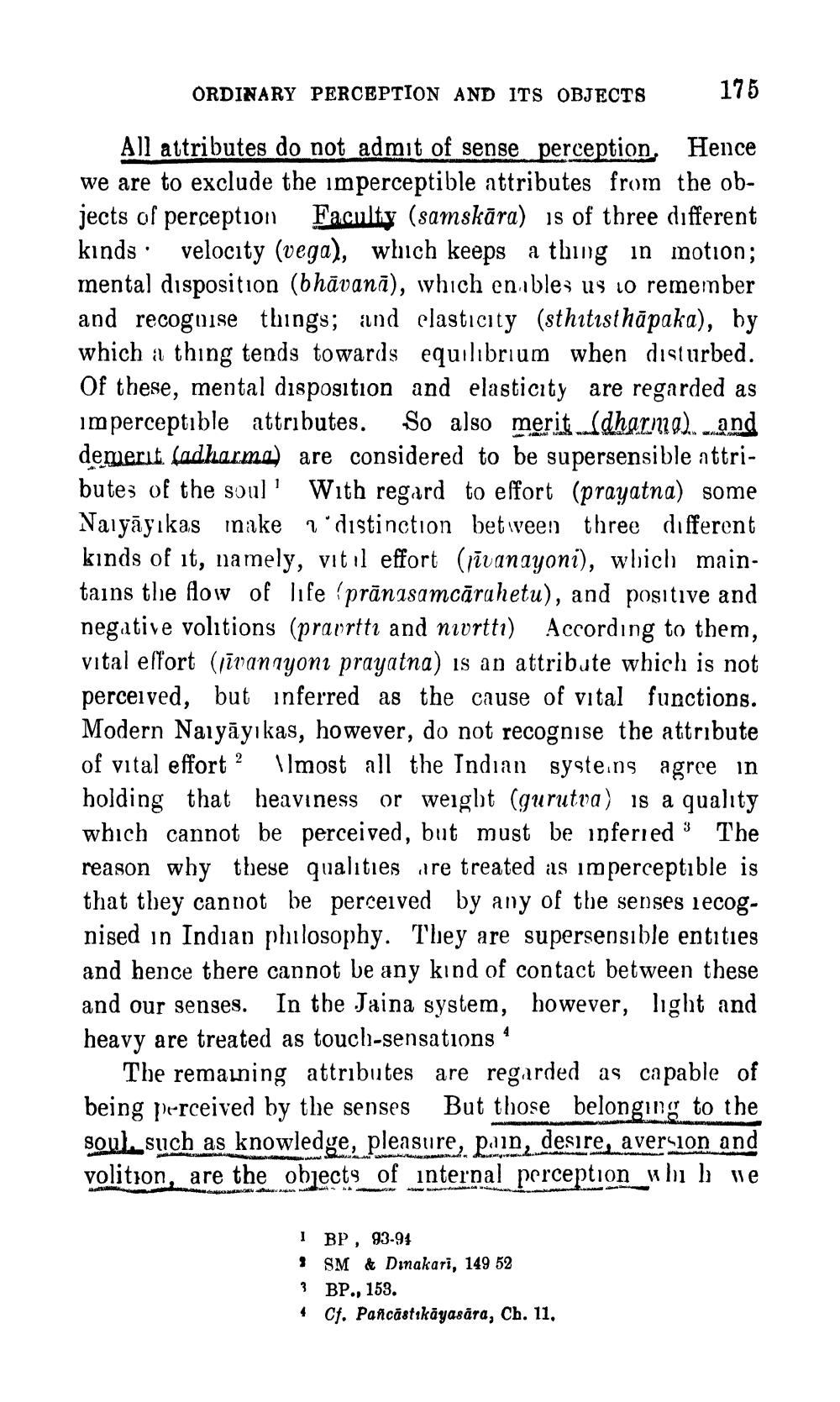________________
ORDINARY PERCEPTION AND ITS OBJECTS
175
All attributes do not admit of sense perception. Hence we are to exclude the imperceptible attributes from the objects of perception Faculty (samskāra) is of three different kinds velocity (vega), which keeps a thing in motion; mental disposition (bhāvanā), which enables us to remember and recoguise things; and elasticity (sthitisthāpaka), by which a thing tends towards equilibrium when disturbed. Of these, mental disposition and elasticity are regarded as imperceptible attributes. So also merit (dharme..and demerit (adharmo) are considered to be supersensible attributes of the soul' With regard to effort (prayatna) some Naiyāyıkas inake 1 distinction betiveen three different kinds of it, namely, vitil effort (jīvanayoni), which maintains the flow of life (prānasamcārahetu), and positive and negative volitions (pravrtti and nurttı) According to them, vital effort (rīvanayoni prayatna) is an attribute which is not perceived, but inferred as the cause of vital functions. Modern Naiyāyikas, however, do not recognise the attribute of vital effort ? Ilmost all the Indian systeins agree in holding that heaviness or weight (gurutva) is a quality which cannot be perceived, but must be inferied' The reason why these qualities are treated as imperceptible is that they cannot be perceived by any of the senses iecognised in Indian philosophy. They are supersensible entities and hence there cannot be any kind of contact between these and our senses. In the Jaina system, however, light and heavy are treated as touch-sensations
The remaining attributes are regarded as capable of being perceived by the senses But those belonging to the soul_such as knowledge, pleasure, pain, desire, aversion and volition, are the objects of internal perception_nhub ne
di
1 BP, 93-94 1 SM & Dinakari, 149 52 3. BP., 153. 4 Cf. Pancastıkāyasära, Ch. 11.




